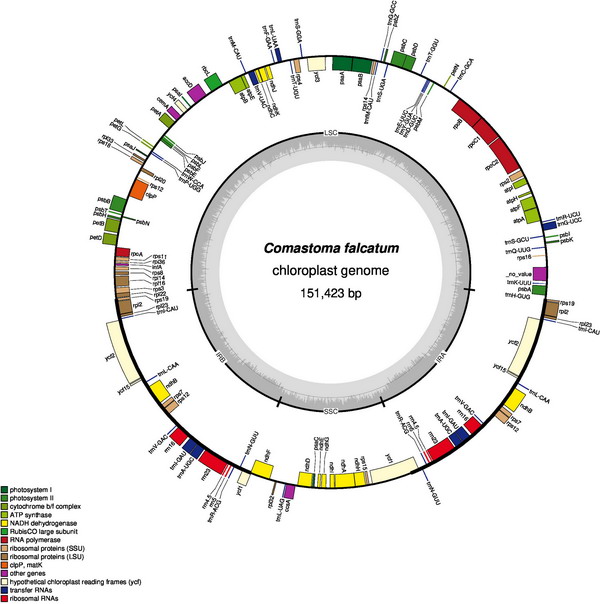Genus Comastoma (subt. Swertiinae, Gentianaceae) contains species, such as “Zangyinchen,” that are important herbs in Tibetan medicine. The phylogenetic relationship of this within Gentianaceae and the circumscriptions of its species have long been controversial with conflicting morphological and molecular data reported. Here, we used whole chloroplast genome sequences for Comastoma species and related taxa to reconstruct their phylogeny and clarify their taxonomic relationships. The results revealed that the length of all plastome sequenced varied from 149 to 151 kb and have high similarity in structure and gene content. Phylogenomic analysis showed that Comastoma is a monophyletic group, closely related to the genus Lomatogonium. The divergence time estimation showed that Gentianaceae diverged at about 21.81 Ma, while the split of Comastoma occurred at 7.70 Ma. However, the results suggested the crown age of species formation in this genus is after 4.19 Ma. Our results suggest that QTP uplift, the alternation of Quaternary glaciation and interglaciation, and monsoon changes might have acted as drivers of speciation in Comastoma.

FIGURE 2 Plastome structure of Comastoma falcatum
This result was published in Ecology and Evolution with the title of “Plastome sequencing reveals phylogenetic relationships among Comastoma and related taxa (Gentianaceae) from the Qinghai–Tibetan Plateau ”.
The link below will guide you to the reading:
https://doi.org/10.1002/ece3.8274
